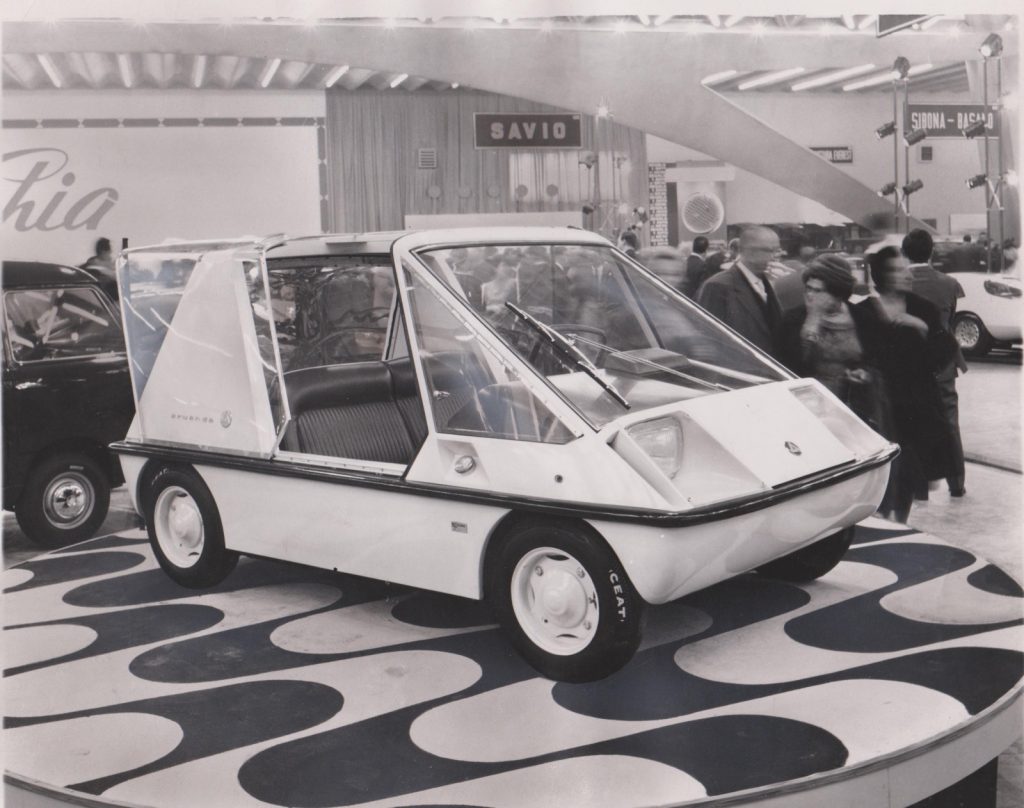The Fissore Aruanda, introduced in 1964, was a city car concept designed by Brazilian architecture student Ari de Rocha.
In 1964, a graduate in architecture and industrial design from the FAU-USP (Faculty of Architecture and Urban Planning of the University of São Paulo) won the Lúcio Meira Prize, an automobile design competition associated with the Motor Show. The design of the small car aimed to reduce the conflict between individual transportation and cities, promoting a more rational use of public space.
According to the designer, the basic concept was to “dress” a person (approximately 75 kg or 165.35 lbs) and minimal luggage with a car for essentially urban use. The car was designed to be very small, with dimensions of about 2.40 m (7’10.5″) long, 1.70 m (5’7″) wide, and 1.40 m (4’7.2″) high, and weighing about 400 kg (881.9 lbs).
The car was designed to carry two passengers, but the project also included a “family” version for six people, and even a military amphibious version.

The innovative design featured a futuristic mono-box shape and a sliding plexiglass roof that moved back and forth to provide access to the cabin. However, the high line of the hood made getting in and out a bit awkward.
It featured trunks at both the front and rear, along with interconnected fuel tanks on either side. The interior boasted safety and comfort amenities that were rare for its class, including adjustable seats and steering wheel, thermal and acoustic insulation, controlled ventilation, and an upholstered dashboard.
The project attracted so much interest that three famous Italian “carrozzieri” – Pininfarina, Michelotti and Fissore – invited him to build a working prototype. Based on the Fiat 500, the concept proposed both gasoline and electric power options. In reality, basis for the car was a cut ’n’ shut Fiat 500 Giardinetta, complete with 499cc ‘twin’ out back.
Unfortunately, it never got beyond the prototype stage at Fissore. The prototype was lost in a flood in Puma, and was returned to Ari himself more than 20 years later. Its restoration was completed in 2010.


You must be logged in to post a comment Login